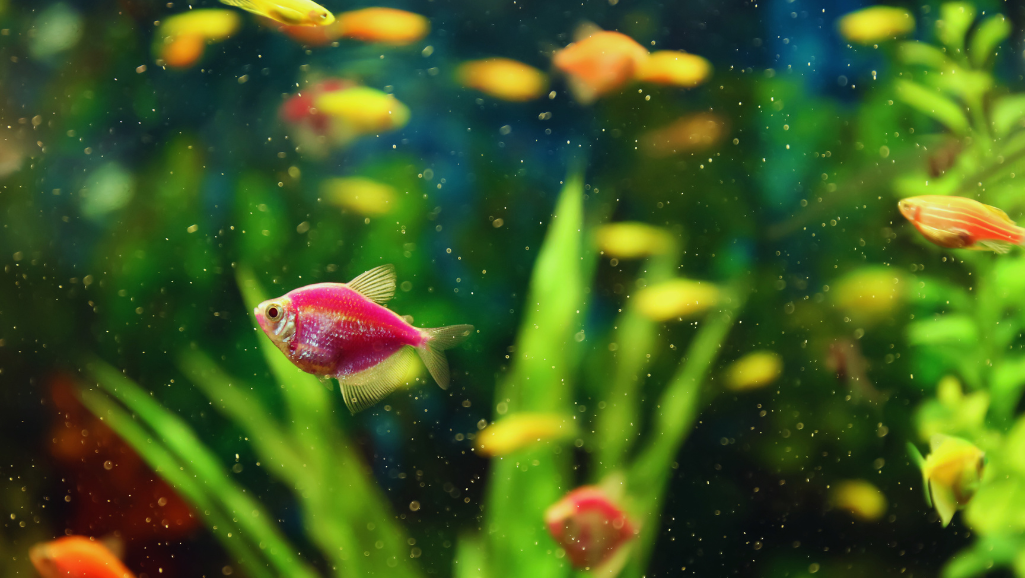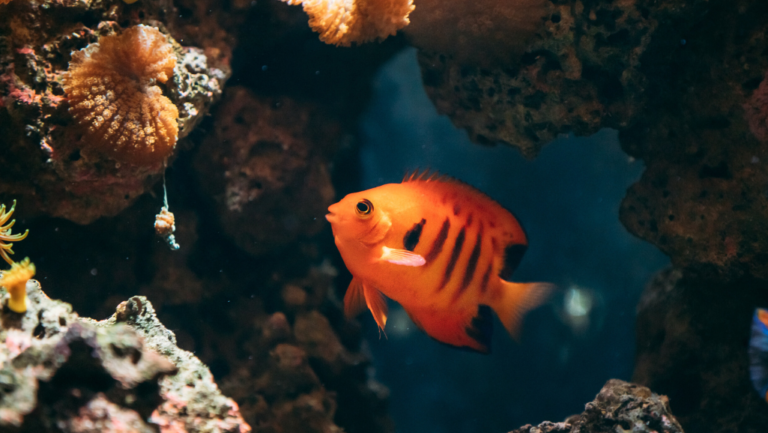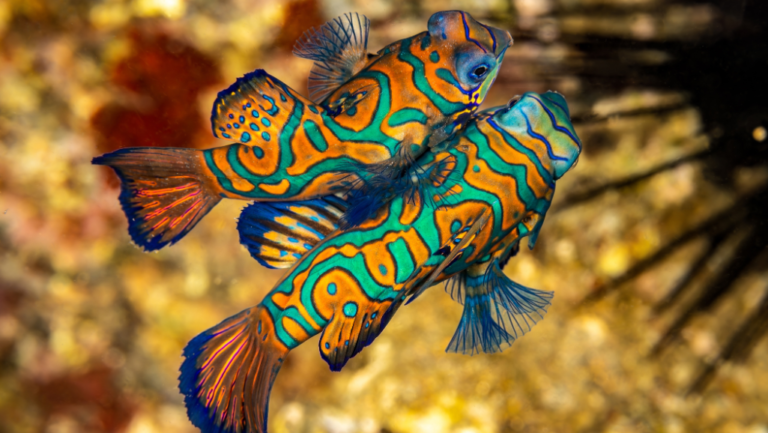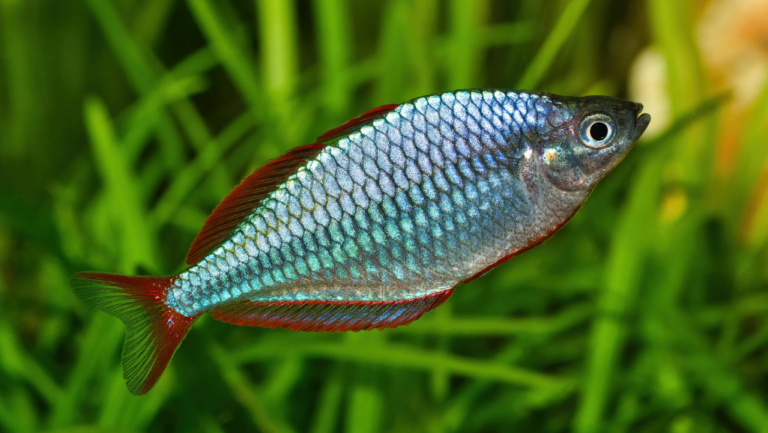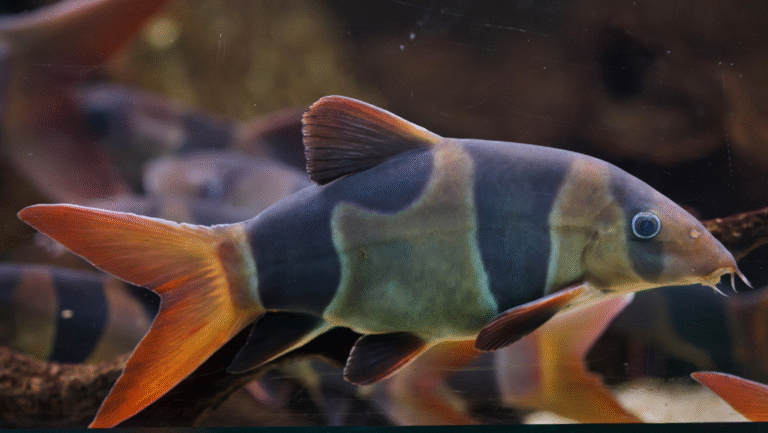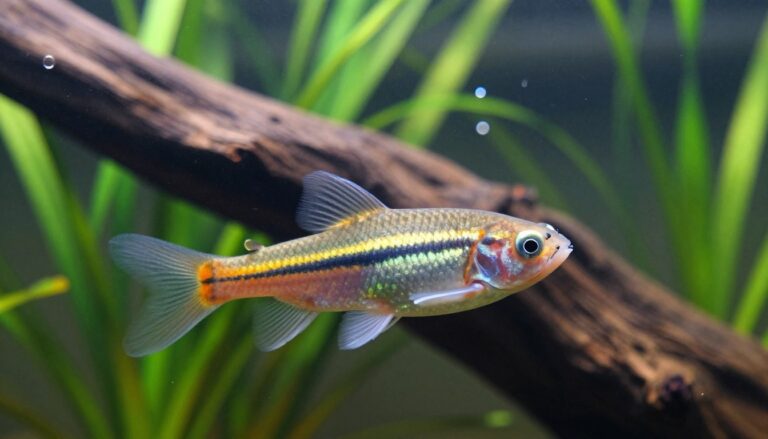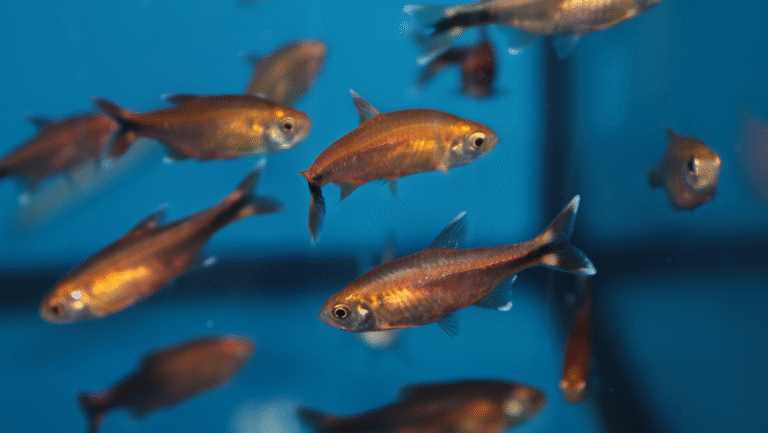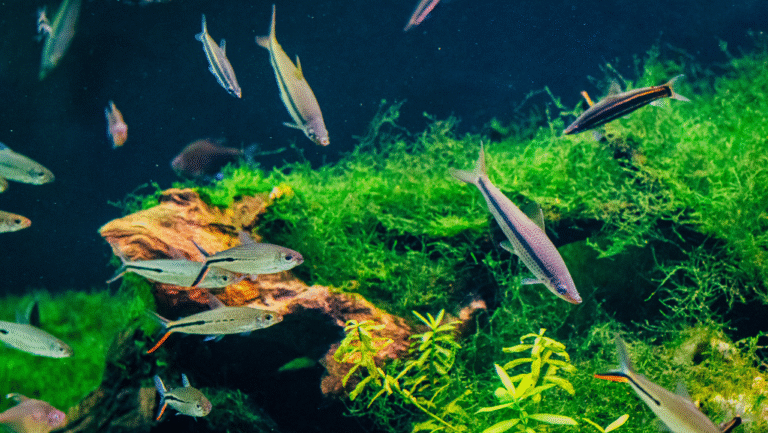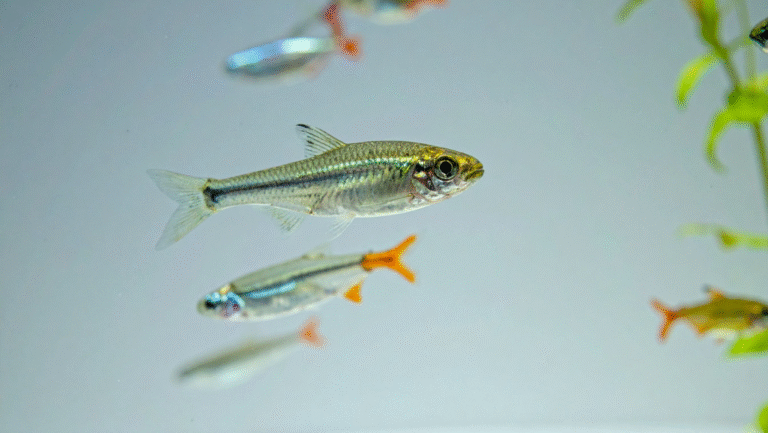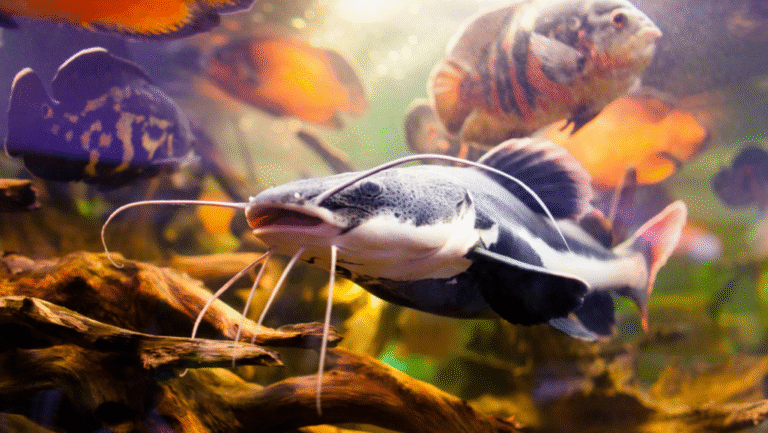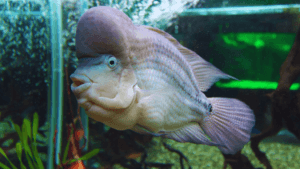Starting an aquarium hobby is exciting and calming, creating a beautiful underwater world at home. For both new and experienced hobbyists, knowing the different aquarium fish types is key to a lively aquatic space. This guide explores the wide range of tropical fish species and freshwater fish types, showing the amazing variety of common aquarium fish.
If you love the calm of freshwater or the vibrant life of tropical waters, knowing what each fish needs is crucial. With the right knowledge, you can create a vibrant underwater world full of life and color.
Key Takeaways
- Get to know a wide range of freshwater fish types and tropical fish species for home aquariums.
- Learn about the specific habitat and care needs of each species for a healthy aquarium.
- Discover why tropical fish species thrive in water temperatures between 75° to 80°F (24°C to 27°C).
- Understand the importance of species compatibility, especially for a community of common aquarium fish.
- Learn about the breeding patterns of livebearers like Guppies and Mollies to manage population in community tanks.
- Explore small yet interesting fish, like the one-inch Pea Puffers, ideal for small aquariums.
Understanding the Diversity of Aquarium Fish Types
Aquariums are full of color and life. They show us the underwater world in a unique way. Each aquarium is different, filled with exotic fish and their homes.
Setting up an aquarium can be exciting. There are over 25,000 fish species, with more than 3,000 for hobbyists. Cichlids and labyrinth fish are favorites for their looks and calm nature.
Learning about fish behavior and needs is key. Cichlids, found in Africa and Asia, need careful tank setup. Rainbowfish, with their bright colors, add beauty to community tanks.
Studies show what fish like and what aquarists prefer. Keeping tanks natural helps fish thrive. This makes for beautiful and healthy aquariums.
| Fish Type | Habitat Requirements | Behavioral Traits |
|---|---|---|
| Cichlids | Varied; structure-rich with rocks or sand substrate | Aggressive territorial behavior; dynamic social interactions |
| Gouramis and Bettas | Calm, plant-filled water | Peaceful; can be territorial with insufficient space |
| Rainbowfish | Shallow water; can adapt to varied water conditions | Social and peaceful; enhances visual diversity in tanks |
Exploring different fish can make aquariums more interesting. Adding catfish or characiforms adds depth. This makes the aquarium more beautiful and balanced.
Starting an aquarium is exciting. It’s a journey into a world of color and life. By understanding fish needs, we can create a beautiful and healthy home for them.
Creating the Perfect Habitat for Freshwater Fish
Creating a great home for freshwater fish in aquariums needs careful planning. It’s important to meet the needs of different fish species. A balanced tank is key for the health and happiness of your fish.
Freshwater Fish Types and Their Specific Needs
Every fish species has its own needs. For example, Cichlids need good filtration because they eat a lot and like their space. Schooling fish like Tetras do best in groups.
Experts say to keep one inch of fish per gallon of water. This helps avoid overcrowding. They have over a hundred years of experience.
Water Parameters: Ensuring Ideal Conditions
Keeping the water right is crucial for fish. Staying within the right temperature range is important. Use a heater and thermometer to keep it steady.
Removing harmful chemicals from tap water is also key. Use a good water conditioner. Test the water weekly to know when it’s safe for fish.
Plant Life: Enhancing Your Freshwater Ecosystem
Adding live plants makes your aquarium look better and helps keep the water clean. They need the right light and soil to grow well. This helps create a healthy home for your fish.
Knowing what your fish need and setting up their home right makes a big difference. This way, you can create a beautiful and healthy underwater world. It’s all about finding the right balance for your fish.
Aquarium Fish Types for Beginners
Starting an aquarium can be both exciting and daunting. It’s important to pick the right beginner fish for aquarium lovers. This ensures the health of the fish and the joy of the hobby. We’ll look at some great fish for beginners, focusing on freshwater and tropical species that are easy to care for.
Best Freshwater Fish for Novices
Freshwater aquariums are perfect for beginners. They require less care and are hardy. Species like platy and cory catfish are great for beginners.
Platy fish can handle water with a pH over 7.0 and prefer harder water. They’re great for beginners. Cory catfish, with their peaceful nature and ability to clean the tank, are also excellent choices.
Choosing Low-Maintenance Tropical Fish
Tropical fish add color and diversity to your tank. The bolivian ram and some gouramis are perfect for beginners.
Bolivian rams love temperatures between 72 to 79°F and a pH of 7.0 to 8.0. They’re known for their beauty and calm nature. Gouramis, except for dwarf varieties, are also good choices. They’re less likely to get sick and are easier to care for.
Knowing the needs of these fish helps beginners create a thriving tank. For more information, check out this guide on aquarium fish profiles.
| Fish Type | Size | Optimal Tank Size | Care Level |
|---|---|---|---|
| Platy | 3 inches | 15 gallons | Easy |
| Cory Catfish | Up to 4 inches | 20 gallons | Easy |
| Bolivian Ram | 3 inches | 30 gallons | Moderate |
| Gouramis (Non-dwarf) | 4-6 inches | 20-30 gallons | Moderate |
Navigating the Vibrant World of Tropical Fish Species
Tropical fish add color and life to our homes. They are like living art. When picking fish for tanks, we look for their beauty and interesting behaviors. This section explores exotic fish and popular breeds, covering their care and habitat needs.
There are many exotic fish species to choose from. Freshwater fish like Neon Tetras need stable water and little current. Saltwater fish, like Clownfish, need better water quality and a setup that looks like their natural home.
Creating the right environment is key for tropical fish. They need good filtration, the right lighting, and a setup that looks like their natural home. This keeps them healthy and active, making your aquarium a beautiful sight.
It’s also important to feed them right. A diet full of algae, veggies, and protein keeps their colors bright. But, too much food can harm the tank and the fish.
Responsible aquarium care includes breeding and conservation. Breeding programs help keep fish populations healthy and diverse. They also help protect endangered species, supporting global conservation efforts.
| Fish Species | Preferred Habitat | Dietary Needs |
|---|---|---|
| Neon Tetras | Low current, densely planted | High-quality flake foods, small pellets |
| Clownfish | Marine settings with anemones | Meaty foods and algae |
| Tangs | Brightly lit reef environments | Vegetable-based foods, marine algae |
| Cherry Barbs | Slightly acidic water, moderate plants | Omnivorous – flakes, live food, plant matter |
Choosing the right tropical fish for your tank is exciting. Whether you love the calm of Angelfish or the fun of Tangs, it’s all about knowing their needs. By picking the right fish, you can create a vibrant and healthy aquarium that brings joy to your home.
A Guide to Popular Freshwater Fish Species
This section dives into the world of popular freshwater fish. It explores the many species that make aquariums vibrant. These fish are key to many enthusiasts’ collections. They show amazing adaptations and behaviors.
A Closer Look at Community Tank Favorites
Community tanks showcase tropical fish diversity. They have many species living together peacefully. Knowing what each fish needs is crucial for a healthy tank.
Species like neon tetras and white cloud mountain minnows need at least a 10-gallon tank. This shows how important space is for their health.
Rare and Exotic Freshwater Fish Varieties
Exotic freshwater fish add a unique charm to tanks. Rare fish breeds like the Aspidoras fuscoguttatus catfish and the Brochis britskii catfish are beautiful. They also challenge aquarists to meet their special care needs.
Keeping these fish encourages a deeper love for nature. It enriches the hobby of keeping aquariums.
Learning about these fish helps us understand and protect biodiversity. For more information, check out a guide here.
| Species | Minimum Tank Size | Optimal Temperature Range (°C) |
|---|---|---|
| Aspidoras fuscoguttatus | 30 gallons | 22-25 |
| Brochis britskii | 20 gallons | 20-24 |
| Callichthys callichthys | 30 gallons | 18-28 |
| Corydoras aeneus | 20 gallons | 25-28 |
| Dianema urostriatum | 20 gallons | 25-28 |
Keeping exotic freshwater fish like the Dianema urostriatum or the Aspidoras fuscoguttatus brings nature’s beauty home. These fish add beauty and connect us to conservation efforts.
In summary, choosing freshwater fish, whether common or rare, is rewarding. It goes beyond beauty, promoting personal growth and care for the environment.
Aquatic Harmony: Best Community Fish for Aquariums
Creating a thriving aquarium starts with picking the right best community fish for aquariums. This part explores how to build peaceful fish communities. It shows what to consider for harmony in different water settings.
Ideal Tankmates: Building a Peaceful Fish Community
Peaceful fish species make aquariums more serene. Knowing the top fish breeds for community tanks is key. For example, Cory Cats and Neon Tetras need friends to show off their colors and behaviors.
Choosing fish wisely is vital — 80% of successful aquariums do it. Fish like Cherry Barbs and Guppies are calm. They get along well in a well-organized tank.
Understanding Social Behaviors of Common Aquarium Fish
Knowing how fish act together is crucial. Dwarf Gouramis can be aggressive, but space helps. Oto Cats and Celestial Pearl Danios are best in groups.
Rummynose Tetras need friends and show their health in color. This is important for a lively, healthy aquarium. 70% of aquarists focus on keeping the ecosystem balanced.
In summary, picking the right fish for your aquarium is more than looks. It’s about understanding how they interact and live together in harmony.
Saltwater Vs. Freshwater Aquarium Fish Types
Choosing between freshwater and saltwater aquariums is a big decision. It’s about finding the right balance between beauty and practicality. Knowing the differences in care, cost, and variety can guide you to the best choice for your skills and dreams.
Freshwater aquariums are easy to care for and affordable. They use simple systems and need less frequent checks, usually every 2-4 weeks. They’re great for beginners because their fish can handle a wide range of conditions.
Saltwater aquariums are more complex and expensive. They require special lighting and equipment for mixing saltwater. Saltwater fish need bigger tanks and careful water monitoring, making maintenance a weekly task. Yet, they offer stunning colors and a diverse range of life, unlike most freshwater setups.
| Fish Type | Tank Setup Cost | Maintenance Cycle | Visual Impact | Species Biodiversity |
|---|---|---|---|---|
| Freshwater | Lower | 2-4 weeks | Cost-effective | Moderate variety |
| Saltwater | Higher | 1-2 weeks | High, with vibrant colors | Extensive variety |
Freshwater tanks are easy and affordable, creating a peaceful aquatic world. Saltwater tanks, on the other hand, offer an exotic oceanic experience at home. Both types offer unique experiences and challenges, catering to different interests worldwide.
The choice between saltwater and freshwater aquariums depends on more than looks or budget. It’s about the commitment to care and the environment of your aquatic friends. Both worlds can turn a simple space into a vibrant aquatic ecosystem.
Exploring Exotic and Colorful Fish Options
For those who love adding life to their aquariums, exploring exotic fish options and colorful fish for aquarium setups is exciting. These fish bring colors, patterns, and unique behaviors to your tank. They become the stars of your aquarium.
Exotic Fish Species for Enthusiasts
Exotic fish are not just beautiful but also need special care. The Electric Blue Acara and the German Blue Rams are great examples. They need warm water and specific food to stay healthy and colorful.
Colorful Freshwater Fish Breeds and Their Appeal
The beauty of colorful freshwater fish breeds goes beyond their looks. They add life to community tanks. Neon Tetras and Cherry Barbs, for example, are peaceful and add elegance with their bright colors.
These fish are great for beginners because they are easy to care for and social. The Cherry Barb is a good choice for a 10-20 gallon tank. It brings color and helps keep the tank healthy.
| Fish Type | Minimum Tank Size | Recommended Group Size | Ideal Water Temperature |
|---|---|---|---|
| German Blue Ram | 20 gallons | 1-2 | 84-86°F |
| Electric Blue Acara | 50 gallons | 6-8 | 72-82°F |
| Cherry Barb | 10-20 gallons | 6+ | 74-81°F |
| Neon Tetra | 10 gallons | 6+ | 70-81°F |
| Celestial Pearl Danio | 10 gallons | 10+ | 73-79°F |
Adding these exotic fish to your aquarium makes it a centerpiece. It also helps protect wild fish by reducing demand. Choosing the right fish for your tank ensures a beautiful and healthy environment.
Tropical Fish Types for Advanced Aquarists
Advanced aquarists often focus on rare and exotic tropical fish. They love the beauty and challenge of caring for these fish. This section explores the world of unique fish for home aquariums, perfect for those who enjoy a challenge.
The Allure of Rare Tropical Species
Exotic tropical fish attract advanced aquarists with their looks and behaviors. Fish like the Queen Angelfish and Harlequin Tusk add color and stories to tanks. For example, the Queen Angelfish can grow up to 17 inches and live for 15 years, making it a long-term tank beauty.
Caring for High-Maintenance Tropical Fish Varieties
High-maintenance fish need careful attention to their environment and food. Species like the Antennata Lionfish require specific water and diets to thrive. For instance, the Achilles Tang is known for its diet and color, making it a favorite among aquarists.
| Species | Max Size | Lifespan | Recommended Tank Size | Special Requirements |
|---|---|---|---|---|
| Clown Triggerfish | 20 inches | N/A | Predator tank | Experienced owners only |
| Harlequin Tusk | 12 inches | Up to 10 years | 185 gallons | Large tank required |
| Antennata Lionfish | 7 inches | N/A | Varies | For very experienced hobbyists |
| Achilles Tang | 10 inches | N/A | Large with complex diet needs | Advanced, experienced aquarists |
Understanding and managing the needs of these fish ensures their health and beauty. This dedication shows an advanced aquarist’s love for marine life and their craft.
Conclusion
Starting an aquarium journey is exciting, exploring the underwater world. We’ve looked at tropical and freshwater fish, showing how to create colorful ecosystems. The right fish for your tank should be beautiful and healthy, thanks to your care.
Species like Guppies and Platies are popular for their bright colors and easy breeding. GloFish add a special glow, while Gouramis are easy to breed. But, it’s important to know about tank size, temperature, and how to acclimate fish properly.
This guide helps both new and experienced aquarists. It covers everything from the hardy Siamese Algae Eater to the peaceful Betta fish. Remember, the key to a great aquarium is knowing the right amount of fish and keeping the water clean. With knowledge, dedication, and passion, anyone can create a thriving underwater world.


